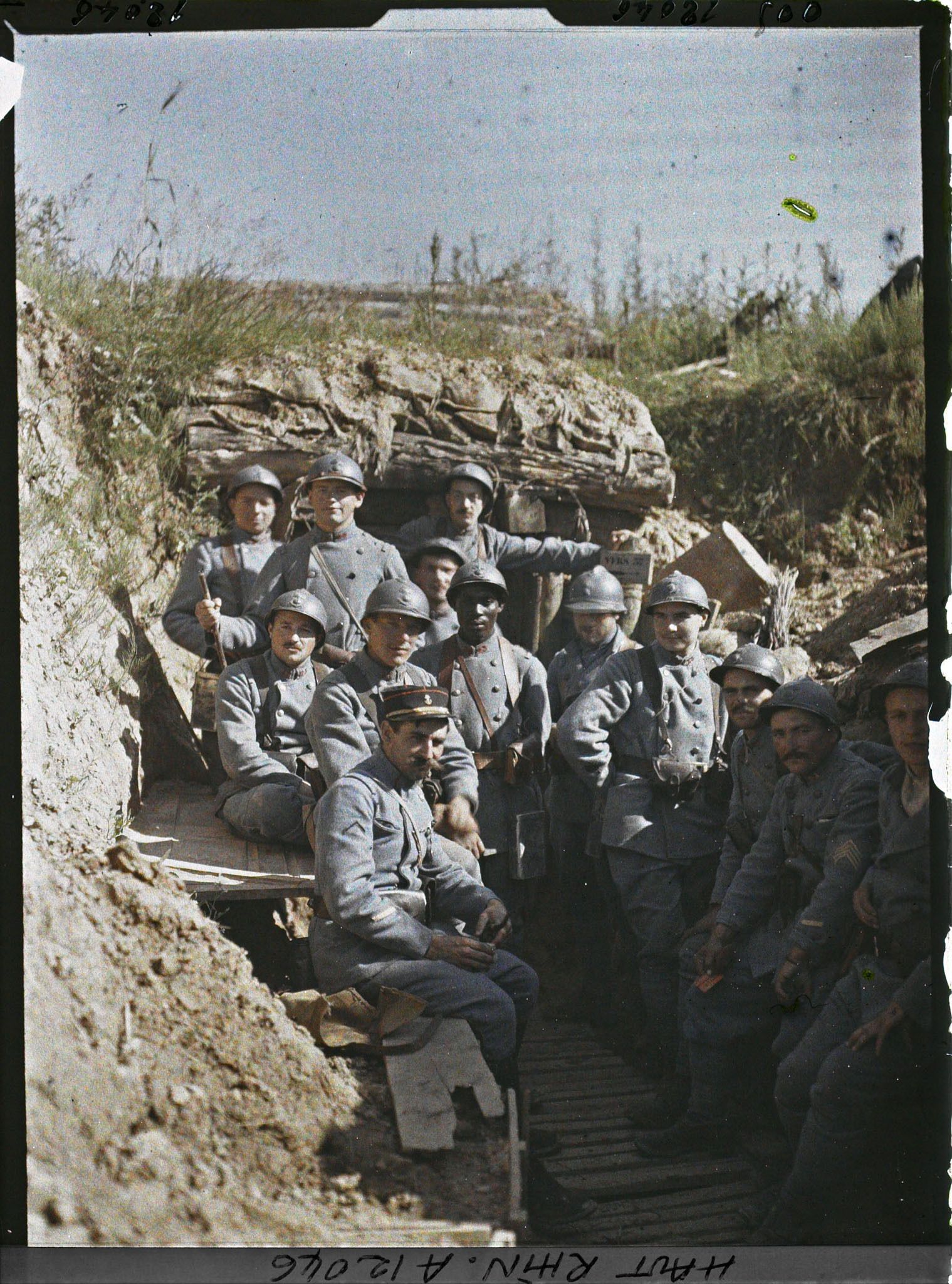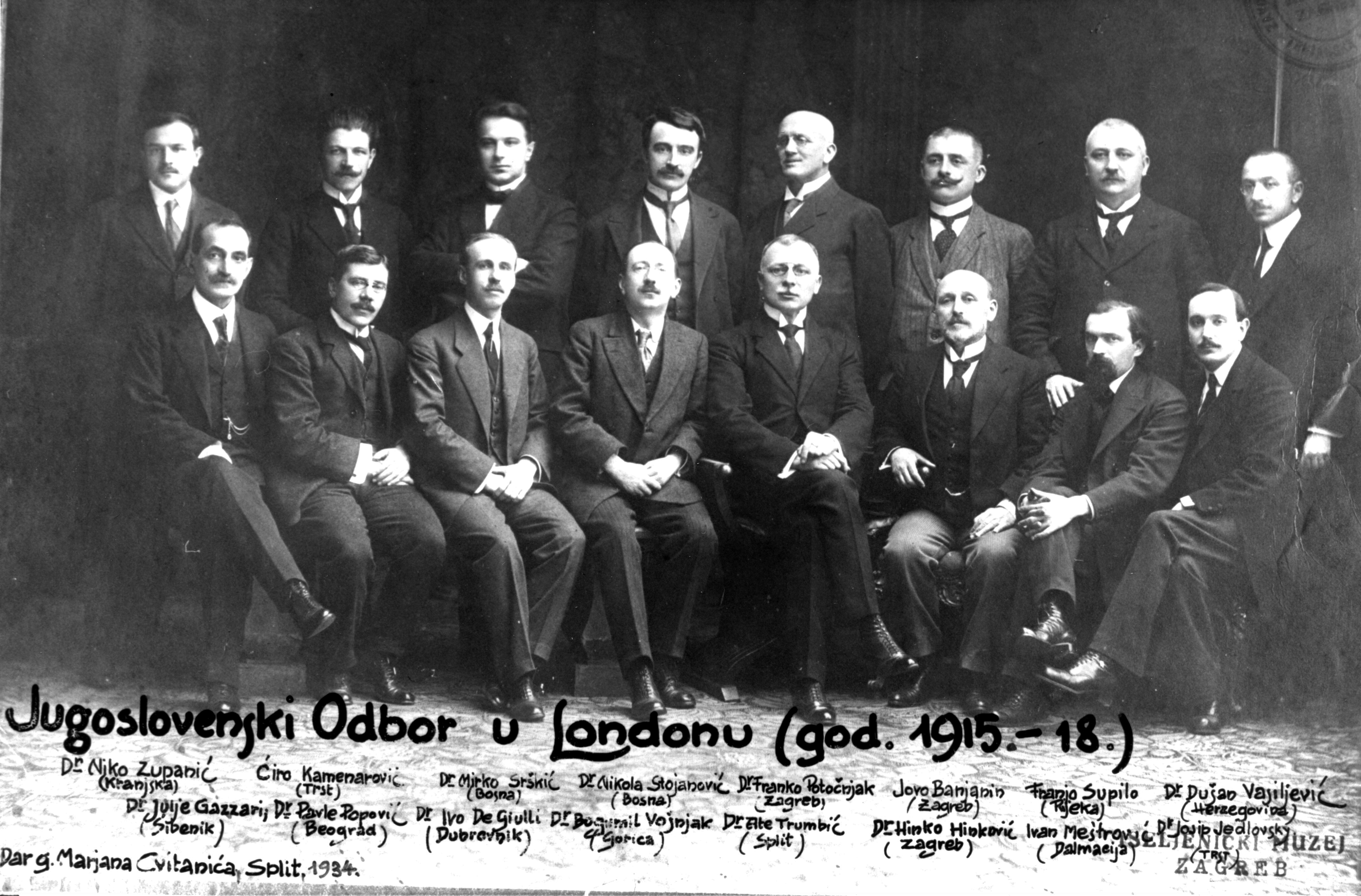|
Yugoslav Division
The Yugoslav Division ( sr, Југословенска дивизија / Jugoslovenska divizija) was a Royal Serbian Army unit, established in January 1918. It was mostly composed of South Slavs volunteers from the Serbs, Croats, and Slovenes Volunteer Corps, former Austro-Hungarian prisoners in Russia and Serb volunteers from the United States and Europe. The division was raised in Salonika and took part in the breakthrough of the Macedonian front and the subsequent operations for the liberation of Serbia during World War I. Formation In late 1917, a large number of volunteers from South Slavic nations travelled to the Macedonian front to volunteer fighting on the side of the Allies. The company of volunteers grew into a battalion, and then into a brigade, eventually becoming a division with the arrival of the two divisions of the Serbs, Croats, and Slovenes Volunteer Corps, a unit composed of former Austro-Hungarian prisoners in Russia previously known as the First Serbian V ... [...More Info...] [...Related Items...] OR: [Wikipedia] [Google] [Baidu] |
Royal Serbian Army
The Army of the Kingdom of Serbia ( sr-cyr, Војска Краљевине Србије, Vojska Kraljevine Srbije), known in English language, English as the Royal Serbian Army, was the army of the Kingdom of Serbia that existed between 1882 and 1918, succeeding the Armed Forces of the Principality of Serbia and preceding the Royal Yugoslav Army. Organization Field armies * First Army (Serbia) * Second Army (Serbia) * Third Army (Serbia) * Timok Army * Užice Army Orders of battle * Order of battle of the Serbian Army in the First Balkan War * Order of battle of the Serbian Army in World War I Wars Military equipment Armament Uniform *Šajkača See also * First Serbian Volunteer Division * Serbian Chetnik Organization * Serbian Army References Sources Books * * * * Journals *Mijalkovski, Milan. "Četničke (gerilske) jedinice Kraljevine Srbije–borci protiv terora turskog okupatora." Zbornik radova Instituta za savremenu istoriju 09 (2007): 59–81. *Becić, Ivan ... [...More Info...] [...Related Items...] OR: [Wikipedia] [Google] [Baidu] |
Thessaloniki
Thessaloniki (; el, Θεσσαλονίκη, , also known as Thessalonica (), Saloniki, or Salonica (), is the second-largest city in Greece, with over one million inhabitants in its Thessaloniki metropolitan area, metropolitan area, and the capital city, capital of the geographic regions of Greece, geographic region of Macedonia (Greece), Macedonia, the administrative regions of Greece, administrative region of Central Macedonia and the Decentralized Administration of Macedonia and Thrace. It is also known in Greek language, Greek as (), literally "the co-capital", a reference to its historical status as the () or "co-reigning" city of the Byzantine Empire alongside Constantinople. Thessaloniki is located on the Thermaic Gulf, at the northwest corner of the Aegean Sea. It is bounded on the west by the delta of the Vardar, Axios. The Thessaloniki (municipality), municipality of Thessaloniki, the historical center, had a population of 317,778 in 2021, while the Thessaloniki metro ... [...More Info...] [...Related Items...] OR: [Wikipedia] [Google] [Baidu] |
Živojin Mišić
Field Marshal Živojin Mišić ( sr-cyrl, Живојин Мишић; 19 July 1855 in Struganik – 20 January 1921 in Belgrade) was a Field Marshal who participated in all of Serbia's wars from 1876 to 1918. He directly commanded the First Serbian army in the Battle of Kolubara and in breach of the Thessaloniki Front was the Chief of the Supreme Command. He is the most decorated officer of Serbia ever. Early years Mišić's grandfather was born in Struganik near Mionica. His parents Radovan and Anđelija (born Damjanović - Koštunjić) had thirteen children. Živojin was the youngest child, and when he was born, only eight of his brothers and sisters were still alive. When he turned 6, he became a shepherd. He finished primary school in Kragujevac. In his memories, he mentions troubles he had with the city kids that teased him because of his peasant origin. In 1868, he started his gymnasium education in Kragujevac, where he finished the 1st, 2nd, and 6th grade. He finished th ... [...More Info...] [...Related Items...] OR: [Wikipedia] [Google] [Baidu] |
Stepa Stepanović
Stepan "Stepa" Stepanović ( sr-cyr, Степан Степа Степановић, ; – 29 April 1929) was a Serbian military commander who fought in the Serbo-Turkish War, the Serbo-Bulgarian War, the First Balkan War, the Second Balkan War and World War I. Having joined the Serbian military in 1874, he fought against the forces of the Ottoman Empire in 1876. Over the following years, he climbed up the ranks of the Serbian Army and fought against Bulgarian forces in 1885. He eventually became the Serbian Minister of War in April 1908 and was responsible for instituting changes in the Serbian Army. Stepanović commanded Serbian forces during the two Balkan Wars and led the Serbian Second Army during World War I. After Battle of Cer he was promoted to second Field Marshal. He died in Čačak on 29 April 1929. Early childhood and education Stepan "Stepa" Stepanović was born on 28 February 1856 in the village of Kumodraž, near Belgrade. He was the fourth child and thi ... [...More Info...] [...Related Items...] OR: [Wikipedia] [Google] [Baidu] |
French Army In World War I
During World War I, France was one of the Triple Entente powers allied against the Central Powers. Although fighting occurred worldwide, the bulk of the conflict in Europe occurred in Belgium, Luxembourg, France and Alsace-Lorraine along what came to be known as the Western Front, which consisted mainly of trench warfare. Specific operational, tactical, and strategic decisions by the high command on both sides of the conflict led to shifts in organizational capacity, as the French Army tried to respond to day-to-day fighting and long-term strategic and operational agendas. In particular, many problems caused the French high command to re-evaluate standard procedures, revise its command structures, re-equip the army, and to develop different tactical approaches. Background France had been the major power in Europe for most of the Early Modern Era: Louis XIV, in the seventeenth century, and Napoleon I in the nineteenth, had extended French power over most of Europe through skill ... [...More Info...] [...Related Items...] OR: [Wikipedia] [Google] [Baidu] |
Timok Division
The Timok ( Serbian and Bulgarian: Тимок; ro, Timoc), sometimes also known as Great Timok ( sr, Велики Тимок, Veliki Timok; ro, Timocul Mare), is a river in eastern Serbia, a right tributary of the Danube. For the last 15 km of its run it forms a border between eastern Serbia and western Bulgaria. It is a branchy system of many shorter rivers, many of them having the same name (Timok), only clarified with adjectives. From the farthest source in the system, that of the Svrljiški Timok, until its confluence (as ''Veliki Timok''), the Timok is 202 km long. The area of the river basin is .Velika Morava River Basin [...More Info...] [...Related Items...] OR: [Wikipedia] [Google] [Baidu] |
Petar Bojović
Petar Bojović (, ; 16 July 1858 – 19 January 1945) was a Serbian military commander who fought in the Serbo-Turkish War, the Serbo-Bulgarian War, the First Balkan War, the Second Balkan War, World War I and World War II. Following the breakthrough on the Thessaloniki Front he was promoted to fourth Field Marshal. Life Early life Bojović was born on 16 July 1858 in Miševići, Nova Varoš. He had distant ancestry from the Vasojevići. He fought in Serbian-Ottoman Wars from 1876 to 1878 as a cadet of the Artillery school, as well as in wars that Serbia waged at the beginning of the 20th century. He was Chief of the General Staff for the first time from 1905 to 1908. Balkan Wars In the Balkan Wars, he was the Chief of Staff of the 1st Army, which scored huge success in battles of Kumanovo, Bitola (First Balkan War) and Bregalnica (Second Balkan War). Given that the commander was the militarily infinitely less experienced crown prince Alexander who had to rely heavily on h ... [...More Info...] [...Related Items...] OR: [Wikipedia] [Google] [Baidu] |
Vardar Division
The Vardar (; mk, , , ) or Axios () is the longest river in North Macedonia and the second longest river in Greece, in which it reaches the Aegean Sea at Thessaloniki. It is long, out of which are in Greece, and drains an area of around . The maximum depth of the river is . Etymology The origin of the name ''Vardar'' derives from Thracian ''Vardários''. It comes from Proto-Indo-European (PIE) *''(s)wordo-wori-'' ("black water"). It can be considered a translation or similar meaning of ''Axios'', which itself is Thracian for 'not-shining' from PIE *''n.-sk(e)i'' (cf. Avestan ''axšaēna'' ("dark-coloured")). It is found in another name of the city at the mouth of the Danube, called ''Axíopa'' ("dark water") in Thracian, which was later translated into Slavic as ''Cernavodă'' (“black water”).Katičic', Radoslav. ''Ancient Languages of the Balkans''. Paris: Mouton, 1976: 149 The name ''Vardários'' (Βαρδάριος) was sometimes used by the Ancient Greeks in the 3rd ... [...More Info...] [...Related Items...] OR: [Wikipedia] [Google] [Baidu] |
Alexander I Of Yugoslavia
Alexander I ( sr-Cyrl, Александар I Карађорђевић, Aleksandar I Karađorđević, ) ( – 9 October 1934), also known as Alexander the Unifier, was the prince regent of the Kingdom of Serbia from 1914 and later the King of Yugoslavia from 1921 to 1934 (prior to 1929 the state was known as the Kingdom of Serbs, Croats and Slovenes). He was assassinated by the Bulgarian Vlado Chernozemski of the Internal Macedonian Revolutionary Organization, during a 1934 state visit to France. Having sat on the throne for 13 years, he is the longest-reigning monarch of the Kingdom of Yugoslavia. Early life Alexander Karađorđević was born on 16 December 1888 in the Principality of Montenegro as the fourth child (second son) of Peter Karađorđević (son of Prince Alexander of Serbia who thirty years earlier in 1858 was forced to abdicate and surrender power in Serbia to the rival House of Obrenović) and Princess Zorka of Montenegro (eldest daughter of Prince Nicholas of ... [...More Info...] [...Related Items...] OR: [Wikipedia] [Google] [Baidu] |
Ante Trumbić
Ante Trumbić (17 May 1864 – 17 November 1938) was a Yugoslav and Croatian lawyer and politician in the early 20th century. Biography Trumbić was born in Split in the Austrian crownland of Dalmatia and studied law at Zagreb, Vienna and Graz (with doctorate in 1890). He practiced as a lawyer, and then, from 1905 as the city mayor of Split. Trumbić was in favor of moderate reforms in Austro-Hungarian Slavic provinces, which included the unification of Dalmatia with Croatia-Slavonia. After the assassination in Sarajevo of Archduke Franz Ferdinand and the invasion of Serbia by Austria-Hungary, Trumbić became the prominent Yugoslav nationalist leader during World War I, and led the Yugoslav Committee that lobbied the Allies to support the creation of an independent Yugoslavia.Spencer Tucker. ''Encyclopedia of World War I: A Political, Social, and Military History''. Santa Barbara, California, USA: ABC-CLIO, 2005. pp. 1189. Trumbić negotiated with Serbian Prime Minister Nikol ... [...More Info...] [...Related Items...] OR: [Wikipedia] [Google] [Baidu] |
Yugoslav Committee
Yugoslav Committee ( sh-Latn, Jugoslavenski odbor, sr-Cyrl, Југословенски одбор) was a political interest group formed by South Slavs from Austria-Hungary during World War I aimed at joining the existing south Slavic nations in an independent state. Founding members included: * Frano Supilo * Ante Trumbić * Ivan Meštrović * Hinko Hinković * Franko Potočnjak * Nikola Stojanović (politician), Nikola Stojanović * Dušan Vasiljević (politician), Dušan Vasiljević First three members were Croats from Kingdom of Dalmatia, next two members were Croats from Kingdom of Croatia-Slavonia, Kingdom of Croatia -Slavonia, while the last two were Serbs of Bosnia and Herzegovina, Serbs from History of Bosnia and Herzegovina (1878–1918), Bosnia and Herzegovina. Their initial gathering happened in 1914 while the committee was officially formed on 30 April 1915 in the Parisian Hotel Madisson. As United Kingdom, Britain was the leader of the Allies of World War I, Entente ... [...More Info...] [...Related Items...] OR: [Wikipedia] [Google] [Baidu] |






